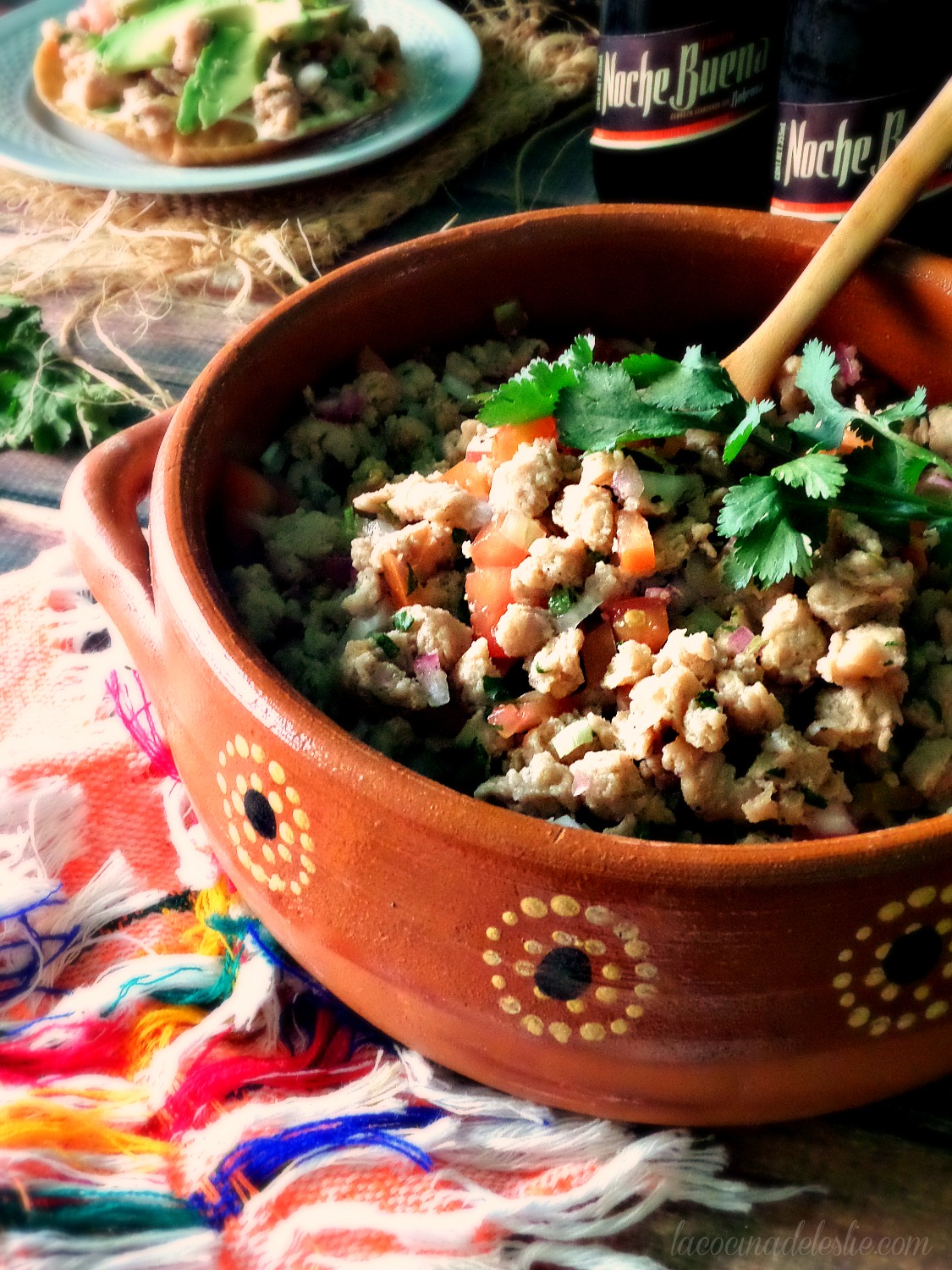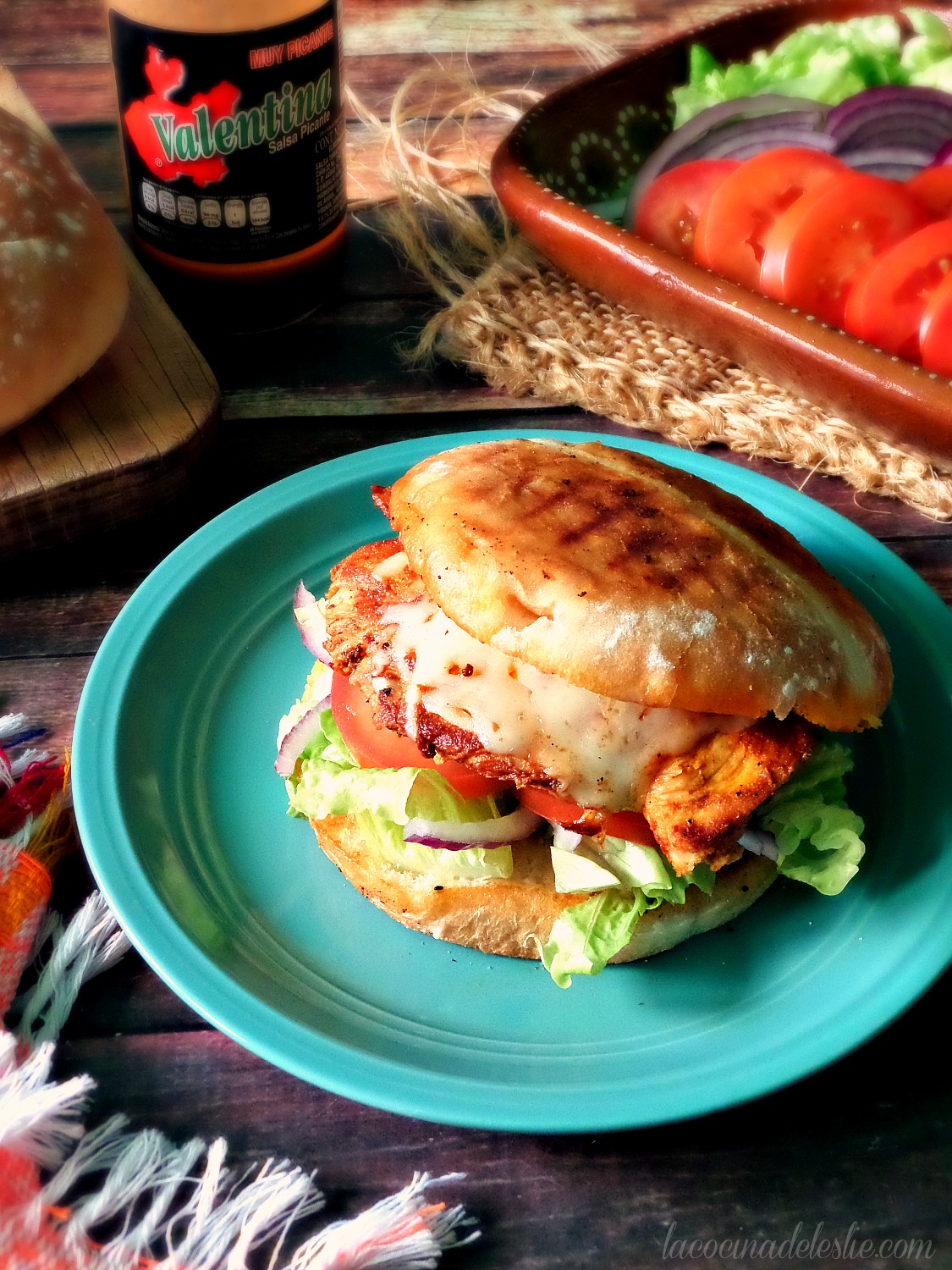- The sticky, stuffy, can't breathe, eat or sleep heatwave is down to its last weeks. Rain season should be here soon, offering relief from the unbearable, mid-90 degree temperatures that are the highest temps my small town has seen in 50 years (or so I'm told).
- Pitaya season is also coming to an end. (Hangs head in extreme sadness)
What is a pitaya?
For those of you that are unfamiliar with Pitayas, they are a delicious cactus fruit only available during the hottest month of the year, which happens to be May, where I live.
Not to be confused with tunas (prickly pears), Pitayas are the sweet, sometimes sour, fruit of the organ pipe cactus, also known as a pitayo.
 |
| A Pitayo Cactus |
This particular pitayo is located at El Rancho and is at least 100 years old. During our Semana Santa camping trip, you could already see the pitayas starting to bloom.
 |
| Pitayo in bloom |
Pitaya Picking 101
Now that you know what pitayas are, you may be wondering how the pitaya gets from the cactus to the market or in my case, my front door.
Campesinos (farmers/farm workers), wake up before dawn to start picking pitayas. You see, as the sun rises, the ripe pitayas open up, attracting the attention of the early birds looking for the proverbial worm. But that old saying has it all wrong. It should be, "The early bird catches the pitaya."
Pitayas are covered with hundreds of thin, little needles that serve to protect the fruit from birds and animals. These espinas can make pitaya picking rather difficult. Most campesinos use a rustic tool that they fashion out of dried reeds. Locally this tool is called a chicole.
 |
| Chicole hanging on the wall at El Rancho |
Since pitayos can grow to be several meters high, most chicoles are very long. The tip of the chicole is separated into three or four sections, creating a sort of nest or basket for a single pitaya to fit into snuggly.
Again, organ pipe cacti are very tall and it's darn near impossible for the campesinos who are standing underneath the cactus to see whether or not a certain pitaya is ripe. A ripe pitaya can be easily plucked from the cactus when touched with the chicole. Unripe pitayas can't be budged.
The pitayas are then placed in a large basket and the small group of campesinos head to town in the back of a pick-up truck. During the drive in to town, the campesinos remove all of the needles from the pitayas.
 |
| Basket full of freshly picked pitayas |
The pitayas are then carefully stacked inside a large basket called a quilihua and are now ready to be sold to the public.
 |
| Quilihua filled with pitayas |
Prices vary from town to town. The average price here is about 5 or 6 pesos per pitaya, which isn't expensive considering all of the hard work involved. Some pitayeros (pitaya vendors) prefer to sell door to door. If you happen to be a preferred customer who buys large quantities of pitayas, like 30 to 40 at a time, the price drops down to 3 pesos per pitaya. Not bad considering that they are delivered right to
How to eat a pitaya
Underneath the hundreds of needles, pitayas are also protected by their cascara (peel). To eat your pitaya, one must carefully remove the peel. I say "carefully", because many times you'll find a stray needle or two in each pitaya.
 |
| Pitaya con cascara |
Removing the cascara is our favorite part of sitting down to enjoy a pitaya. We are always amazed to see the assortment of brightly colored fruits. Pitayas come in various shades of yellow, orange, red, purple and pink. The rarest of all is the white pitaya.
As for texture, I liken pitayas to kiwis. Maybe it's because of the tiny black seeds.
Pitayas for the most part are sweet. The first pitayas of the season tend to be more sour, as are the white ones. It is this blogger's opinion that the yellow and orange pitayas are the sweetest and best tasting pitayas of all.
Pitayas are one of the rare fruits that are eaten without salt and lime juice. Pitayas can also be used to make agua fresca, sorbet or almibar (syrup) for nieve raspada (snow cones).
And now you know just about everything there is to know about pitayas.
*Note: A very special Thank You to my Hubby, my suegro and my brother-in-law Gerry for sharing this valuable information that they learned from first-hand experience about pitayas.


















thanks for another lesson Leslie, I don't think that I've come across these before but now I'll keep my eye out, well next year I'll keep my eye out I guess, lol.
ReplyDeleteKrystal
I agree they are yummy. I always said that they taste a bit like a kiwi and a strawberry. Very tasty.
ReplyDeleteSo THAT's what a pitahya is!!! Y'know, for the past 6 years, I've lived less than 1km from a village named "La Pitahya" and I never knew what it meant! Guess I should've asked! I always just assumed it was some sort of fish like everything else around here!!! lol
ReplyDeleteGreat article, BTW -- I have ALL KINDS of respect for the campesinos. We harvest nopales here and I ALWAYS end up with little hair-like stickers in the worst places!!!
So, your heat is now over??? Oh, I'm jealous!!! Ours has just barely started. We won't see rain for another month or so, but the humidity rolled in last week -- and the mosquitos are settling in nicely. Ah, summer! ;^)
Well, happy rainy season!!!
I used to be really confused when people in the north talked about pitaya coming from a nopal like cactus, I thought they were confusing them with tunas. Now I see what they were talking about. Pitaya down here in the south is a completely different fruit and the season is just beginning. I happily ate my first pitaya of the year today. Ours are from a vine like cactus that grows up walls and has a sweet smelling, large, white bloom at night. They are red, purple and yellow, with either a purple or white inside full of thousands of tiny seeds. I can see the resemblance in the seeds and why they ended up with the same name in different places. Our pitaya is grown here in Yucatan and south throughout Central America. The top picture here, http://en.wikipedia.org/wiki/Pitaya is the one we have.
ReplyDeleteAwesome info amiga! They look really yummy. I wish my husband was here so I could show him your post and ask him if this is what his sobrinas gave me. It looks similar to a fruit I ate on one of our visits to Mexico. If it is indeed the same one, it was really good! (i could have eaten more, but didn't want to be rude...LOL)
ReplyDeleteDid not know this, but I have seen them for sale on the street. You are a useful woman.
ReplyDeleteWow your pitayas are different from ours! Ours are hot pink on the outside, with little green spikes on them. The inside is white with black seeds.
ReplyDeleteI love how your colorful ones look all together and peeled :)
Thanks for this! I had heard of prickly pear but not pitayas. The pictures are definitely making me crave some cold sweet prickly pears in this weather. I started a blog for expats thinking of moving to Mexico & added your blog to my blog roll (http://expatinmexico.wordpress.com/), I look forward to more of your entries!
ReplyDeletede javu
ReplyDeleteis this not a re-run?
Not a re-run. Just a more detailed post about pitayas and how they are picked and how they can be eaten. :)
ReplyDeleteYou can always add pitayas to your bucket list! :)
ReplyDeleteOur heat isn't over yet. The end of May is like our Groundhog's Day. If we get rain before the end of the month, rain season should start before the end of the next month. No rain in May means no rain until July! :) And even during rain season, the weather can get pretty hot, but we know that it will cool down my late afternoon/early evening.
ReplyDeleteHow cool that you live near "La Pitahya"! :) El Rancho that we visit is also called "El Pitayo".
How cool! Both of our pitayas look similar on the inside, just different colors, but completely different on the outside.
ReplyDeleteI try my best Señor! :)
ReplyDeleteI think the best thing I love about pitayas is their age! I often think about what some of them have seen in all of their years. My family is from a remote ranchito in Zacatecas where pitayas are talked about as landmarks. I still remember a story my uncle told me about a legend that happened by an old pitayo (I seem to remember him saying it with an o).
ReplyDeleteI have tasted a fruit similar to the pitaya in that it grows on cactus but without the pricklies. I think I will post about it and see if anybody has ever tasted it. Perhaps your hubby, suegro and brother-in-law can help shed some light on my mystery fruit ;)
These are so coooool! When I first saw the fruit part, the first thing that came to mind was Superman's kryptonite. The insides are so beautiful. I'd never seen or heard of these. Are these even available in the States. I'm dying to try one. Awesome lesson, Leslie. : )
ReplyDeleteHey, is a chicole the same as a chicote? My mom used to always threaten she was going to hit us with a chicote if we weren't good ... I wondered since the chicole is a stick.
ReplyDeletepitaya's agua fresca and sorbet are just delicious, i grew up in a small town my dad cultivated grapes and near to his lands were some pitayos, we enjoyed agua frescas everytime my dad could get some :p
ReplyDeleteHola Leslie, muchas felicidades por tu blog, es realmente entretenido.
ReplyDeleteEn mi pais Peru esta fruta recibe el nombre de Pitahaya, es casi desconocida solo crece en zonas muy elevadas y deserticas (3,000-4,000 metros sobre el nivel del mar) Yo porque naci en esa zona y atraves de mis padres ,quienes cuando volvian de visita al lugar recogian las frutas para nosotros tuve la gran suerte de degustarlas.
Muchas Bendiciones para ti y los tuyos.
your work in this blog is amazing, mis respetos!
ReplyDeleteMuchisimas gracias! :) I'm glad you liked it!
ReplyDelete